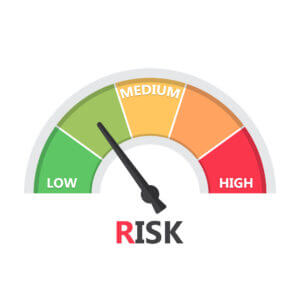What is your surgical risk?
 Surgical risk is simply the chance of a problem arising at the time of surgery. However, it can feature hours, days or even weeks afterwards. But what impact does this have on our lives? Do you know the impact of a surgical risk? We sit with the surgeon and sign a form, accepting that risk can arise. The surgeon’s task is to ensure you appreciate that surgery cannot be performed without something arising that may be unfavourable to your recovery. You hope you will be better or cured. There is a chance that surgery will fail or make you worse. Have you considered this?
Surgical risk is simply the chance of a problem arising at the time of surgery. However, it can feature hours, days or even weeks afterwards. But what impact does this have on our lives? Do you know the impact of a surgical risk? We sit with the surgeon and sign a form, accepting that risk can arise. The surgeon’s task is to ensure you appreciate that surgery cannot be performed without something arising that may be unfavourable to your recovery. You hope you will be better or cured. There is a chance that surgery will fail or make you worse. Have you considered this?
In some cases, patients think it is the surgeon’s fault, but mostly, it is not, of course, someone must be to blame! The surgeon will explain as much as you want and need, but where do we stop? It is not unusual to be told as part of the risk death might arise. This is the incongruity of delivering health care. The surgeon has Damocles’s sword hanging over his head. Until something happens, the surgeon is often considered gifted and free of causing a problem. I am a retired podiatric foot surgeon but have been on the other side. Here is a case history from my experience. I presented for knee surgery. I knew the surgeon. He was talented, not too young or old and at the top of his game. I posed the question as a patient but with surgeon’s foresight.’
‘Are there any complex regional pain syndrome cases you have experienced?’
Complex regional pain syndrome (CRPS) is a rare but horrible condition, and I have seen plenty of it and have written about it.
‘No, I’ve not had one, but here is a paper I wrote on the operation,’ he passed me a research paper. I read it when I arrived home, and there, amongst all the complications that could arise, he had one case of CRPS. He had forgotten, so LOW was the risk. But the impact is HUGE! This condition is underreported. If I had developed CRPS, would he have been negligent? Yes, he failed to mention something I had asked him directly. Would he have been negligent in causing it? Not. CRPS happens through the body’s reaction to injury.
What’s the worst-case scenario?
Well, you may not survive the operation. Is this the worst-case scenario? If you went in for bunion surgery, you would not expect to die. If you had heart surgery, then maybe you would appreciate that death does occur. After all, it’s an important organ, and many things can go wrong. It may surprise you to know that people do die after foot surgery. In one case a surgeon gave a medication the patient was allergic to. This, of course, would be negligent and not expected but could as quickly arise if the allergy was unknown. Of more relevance, a patient died of an overwhelming infection that caused septicaemia. This was called necrotising fasciitis, not to be confused with the usual common fasciitis in the foot. The flesh-eating condition occurs so swiftly death arises, and the heart stops. Both of these cases were rare. The first problem can be prevented by undertaking the World Health Organisation pre-surgical checks introduced into surgery in 2008.
The second problem is difficult to predict as it can occur in healthy patients. There is no way of knowing in advance if this can occur. This type of risk is very, very low, but the impact of such a condition occurring is very high. The same condition might require amputation of a leg. All of this is pretty remote from the planned surgery. We call this a Level 5 impact risk, and the Royal College of Podiatry first developed this system on a trial basis in 2010, launching it in 2014. I published the basis of risk and impact in two books Morton’s Neuroma (2018) and Bunion Hallux valgus, Behind the Scenes (2019). It is easy to imagine why this is called behind the scenes.

RISK IMPACT LEVEL
- Expected frequently with surgery. Features are short-lived and do not involve surgery or significant interventions
- Expected but less frequently. May remain over 3-12 months and then disappear slowly
- Not expected – but could happen; borderline sequella but complication may arise. May have consequences. Longer treatment times and possible surgery may be required
- Not expected, low chance of occurring – always known as a complication. Consequences for function and mobility, some permanent loss possible. Loss of part, surgery required. Usually containable. Usually requires further surgery
- Difficult to predict, very low likelihood of arising – serious complication. Direct effect on life, possible death, hospitalisation with attendant secondary problems.
There is no such thing as simple surgery
The one thing everyone must appreciate is that there is no NO RISK. Some problems arise and we expect but these only have minimal impact. Such problems are not complications but inconveniences. Swelling and pain after surgery is expected and, as such, is a Level 1 impact risk. You may not get a shoe on after surgery, but you will in a few weeks, a month to three months, depending on the complexity of the operation. Of course, patient A and patient B don’t heal simultaneously. If swelling continues, it might shoot into a Level 2 impact risk. This is still minor in terms of the level 5 impact risk. If you had a phenolic nail surgery operation and expected the nail never to return, and it did, this would have a low chance of occurring, around 10-20% at worst. This is not expected but could happen, but the main impact would be that further surgery is required. This would count as a Level 3 impact risk.
Until now, levels 1-3 have been inconvenient and are known as sequellae. Features of surgery that are either common or do occur with some frequency. Levels 4-5 impact risks are rather different. We have already described level 5, but perhaps it is important to understand what each means. Death is final and affects relatives rather than the patient. However, if you are left with a sequella that causes loss of limb, constant pain, reduced health quality, or life-shortening complications, these are undoubtedly worse. The previously mentioned condition of CRPS varies from a mild form to a serious form, and so spans levels 3-5. However, I would place CRPS at level 4 when discussing matters with patients. I want to try to have them understand what could happen and if they wish that risk.
The impact goes further and affects income, causes depression, leads to job loss, and strains marriages. Additionally, mobility is affected, and hobbies have to be dropped. The surgeon may say this is a 1% risk, but the impact is 100%. High risk, as in 1-3 maybe 20%, but the impact may be low, at say 5%, and temporary. High-impact risks are often permanent and, at best, long-lasting.
You can download a Guide to PASCOM-10 and the risk impact with further details (2018). This is a unique consent guide because it removes some of the misunderstandings from the consent process.
Consent

https://www.dreamstime.com/photos-images/signing-consent.html
The term informed consent is now well established and implies that the patient, the treatment receiver, understands the impact and risk and benefits of a specific intervention.
‘Well, I can’t be worse than I am now,’ says one patient to me.
‘Yes you can!’, I reply, trying to disabuse them of the fact they could be made worse.
The problem comes when, as a surgeon, you know you can help a patient improve, and there is a high chance they will be much better, but you also know you have almost to put them off. This is almost contradictory behaviour. Until the late eighties, the USA led the way in suing health professionals. Tests were extended to leave no stone unturned and added to the cost of medical treatment. After 1990, my colleagues and I became more aware of the dangers associated with falling an easy prey. The consent process was tightened quite rightly in the NHS and followed by the private sector. Consent and discussions can take up much of the consulting time. Leaflets, booklets and websites have grown, not least ConsultingFootPain, to try to aid patients. YouTube provides visual information, but we still do not hammer home impact as well as we can.
Seek out the missing pieces

Here is a GUIDE TO ASSIST CONSENT with IMPACT covering a broad range of problems suitable for all readers. You can also read Reflective Podiatric Practice newsfeed (November 2018): The Changing Face of Consent and Patient Communication, later published in Podiatry Review (Autumn 2019:17-20) ) which investigates some of the changes in consent law.
 Consent will no doubt be refined further as time passes, and it will almost certainly move to be recorded as a standard. Nonetheless, both the patient and clinician must work toward understanding the impact of information in a practical and understandable format. Always ask, “What is the risk?” If you receive a percentage reply, ask, “But if that happens to me, what is the impact?” Only then will you consider whether the risk and impact balance is adequate.
Consent will no doubt be refined further as time passes, and it will almost certainly move to be recorded as a standard. Nonetheless, both the patient and clinician must work toward understanding the impact of information in a practical and understandable format. Always ask, “What is the risk?” If you receive a percentage reply, ask, “But if that happens to me, what is the impact?” Only then will you consider whether the risk and impact balance is adequate.
For those interested in a real case associated with foot surgery, this short report was produced in 2018 for clinicians and has been reproduced and modified (2021) with permission of Busypencilcase Reflective Communication. Case History (Legal). Consent Under Test (Part 1). The case brought by the patient failed and was an example of the time it takes for litigation to be heard. This is one example from thousands that are heard yearly, and many fail because legal advice is often flawed. The case centred around the patient denying she had information about CRPS.
Thanks for reading ‘Do you know about surgical risk impact?’ by David R Tollafield

David is a retired podiatric foot surgeon and author
Published by Busypencilcase Reflective Communications Est. 2015
June 2021. Modified August 2024.

Produced for ConsultingFootPain


Recent Comments